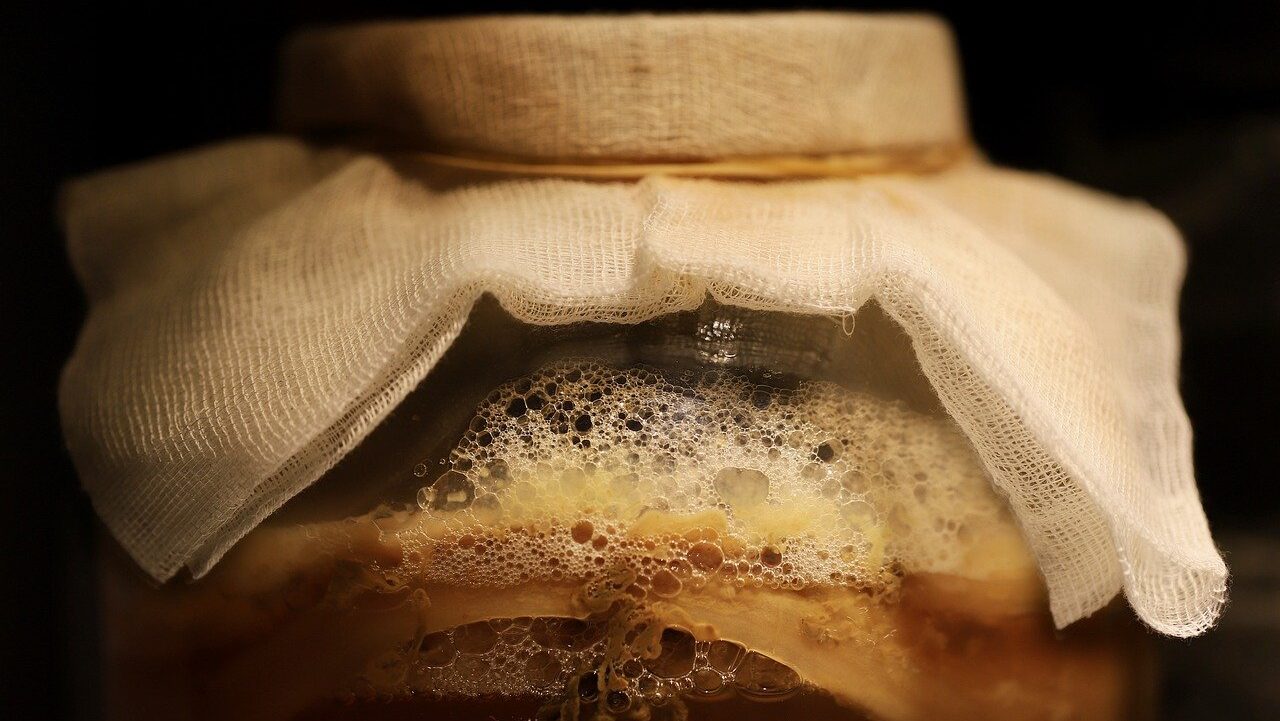If you’re ready to elevate your wellness routine with a refreshing drink, homemade kombucha could be your next DIY kitchen project. Kombucha, a fermented tea known for its tangy flavor and potential health benefits, has been a popular drink for centuries, originating in China and spreading worldwide. Making kombucha at home is both cost-effective and simple, and it lets you control flavor, sweetness, and fermentation time. Here’s your step-by-step guide to brewing kombucha from scratch.
What Is Kombucha?
Kombucha is a lightly carbonated, fermented tea made using black or green tea, sugar, and a SCOBY (Symbiotic Culture of Bacteria and Yeast). The SCOBY is responsible for fermentation, where it consumes the sugar and transforms the tea into a slightly tangy, mildly effervescent drink packed with probiotics, antioxidants, and B vitamins.
Health Benefits of Kombucha
Kombucha is often praised for its potential health benefits, which can include:
- Improved Gut Health: The probiotics in kombucha can support digestive health and contribute to a balanced gut microbiome.
- Antioxidant Boost: Kombucha contains antioxidants, which may help reduce inflammation and support overall well-being.
- Enhanced Immune Support: The vitamins and enzymes created during fermentation may provide immune-boosting properties.
Note: While many people enjoy kombucha’s potential benefits, it’s essential to drink it in moderation and consult your healthcare provider if you have specific health concerns.
Kombucha Recipe: Step-by-Step Guide
Ingredients
- 8 cups filtered water
- 1 cup white sugar (organic if possible)
- 8 bags of black or green tea (or 2 tablespoons of loose leaf tea)
- 1 cup starter kombucha (unflavored kombucha from a previous batch or store-bought raw kombucha)
- 1 SCOBY (available online or from a friend who brews kombucha)
Equipment Needed
- 1 large glass jar (preferably 1-gallon capacity)
- Clean cloth or coffee filter and rubber band for covering the jar
- Wooden spoon or silicone spatula (avoid metal, as it can interact with kombucha)
- Bottles with airtight lids for storing and second fermentation (optional)
Directions
1. Brew the Sweet Tea Base
- In a large pot, bring water to a boil.
- Add sugar and stir until fully dissolved.
- Remove from heat, add the tea bags, and steep for 10-15 minutes.
- Remove the tea bags and allow the tea to cool to room temperature.
2. Transfer to the Fermentation Jar
- Pour the cooled tea into your glass jar.
- Add the starter kombucha (this acidic liquid helps balance the pH and prevent mold).
- Gently place the SCOBY on top of the tea mixture.
3. Cover and Ferment
- Cover the jar with a cloth or coffee filter, securing it with a rubber band to allow airflow while keeping out dust.
- Place the jar in a warm, dark place (between 70-80°F is ideal) for 7-14 days. The longer it ferments, the tangier it will become.
4. Taste Test
- After 7 days, taste a small amount to check if it’s reached your desired flavor. It should be tangy with a bit of sweetness. If it’s too sweet, let it ferment a few more days.
5. Bottling and Second Fermentation (Optional)
- For a fizzy kombucha, transfer the liquid (without the SCOBY) into bottles with airtight lids, leaving some room at the top.
- Store bottles at room temperature for 1-3 days, then refrigerate. Open bottles carefully, as they may be highly carbonated.
Kombucha Flavor Ideas
One of the best parts of making kombucha at home is the ability to experiment with flavors. Here are some popular options:
- Ginger Lemon: Add a few slices of ginger and a squeeze of lemon juice for a zesty, refreshing taste.
- Berry Blast: Add fresh or frozen berries like raspberries, blueberries, or strawberries.
- Citrus Mint: Slices of orange or lime with a sprig of fresh mint make for a cooling summer kombucha.
Tips for Safe Kombucha Brewing
- Use Clean Equipment: Keep everything clean, as kombucha is sensitive to contamination.
- Avoid Metal: Fermenting in metal containers or using metal utensils can negatively impact the taste and quality.
- Regularly Check the SCOBY: A healthy SCOBY is typically light beige and may grow new layers. If you see green, blue, or black spots, it’s likely mold, and you should discard the batch.
Storing and Reusing Your SCOBY
Once your kombucha is done, you can keep the SCOBY in some leftover tea as a starter for your next batch. Store it in a jar at room temperature, and it should stay healthy for months. As your SCOBY grows, you can peel off extra layers to share with friends or expand your homebrew setup.
Frequently Asked Questions
1. How Long Does Homemade Kombucha Last?
Properly stored in the refrigerator, kombucha can stay fresh for 1-3 months.
2. Why Is My Kombucha Too Sour?
Longer fermentation times lead to more sour kombucha. Next time, check the taste earlier in the process.
3. Can I Use Other Types of Tea?
Yes, you can experiment with green, black, or oolong teas, but avoid teas with added oils or flavors.
Final Thoughts
Brewing kombucha at home is not only cost-effective but also allows for a truly personalized drink. Enjoy the process and experiment with unique flavors, carbonation levels, and brewing times to craft your ideal kombucha. With the right care and attention, you’ll have a refreshing, probiotic-rich drink that’s as satisfying to make as it is to drink.



